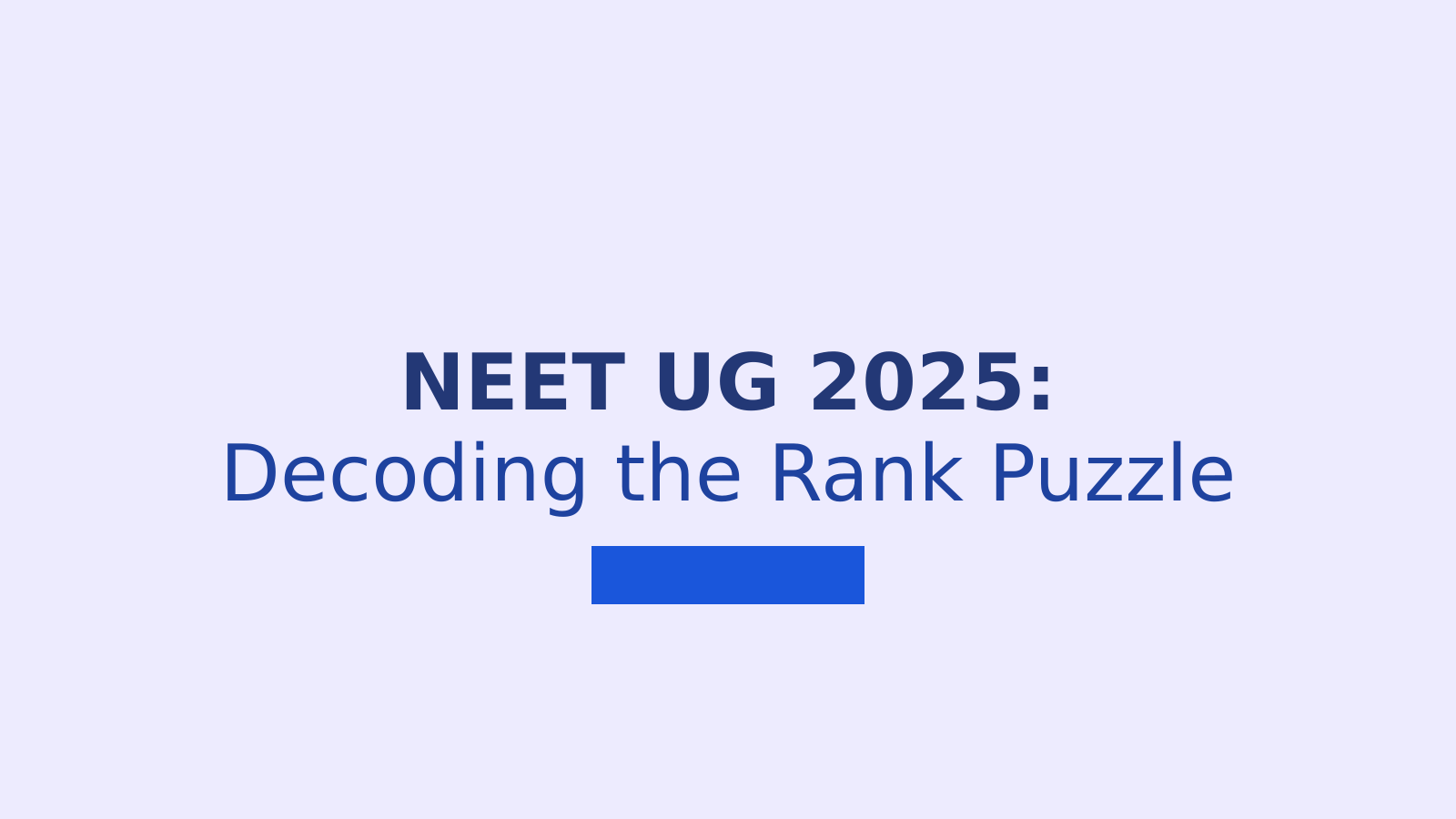Many NEET UG 2025 aspirants are puzzled by an important question after seeing their results - Why do candidates with the same percentile score get different ranks? If you're also wondering about this, you've come to the right place! Let's dive into the new tie-breaking rules introduced by the National Testing Agency (NTA) this year to resolve such situations fairly.
What is a Tie Situation in NEET UG?
NEET is a national-level medical entrance exam taken by lakhs of students. This year, over 13 lakh candidates appeared for the test. With such large numbers, it's common for multiple students to score the same marks or percentile. When two or more candidates have identical scores, it creates a tie that needs to be broken to assign unique ranks.
New Tie-Breaking Rules for NEET UG 2025
NTA has implemented a 7-point tie-breaking policy for NEET UG 2025. Let's look at these rules in order:
- Biology Score: The candidate with a higher score in Biology (Botany + Zoology) gets the better rank.
- Chemistry Score: If Biology scores are the same, the Chemistry score is considered.
- Physics Score: If both Biology and Chemistry scores are identical, Physics scores determine the rank.
- Fewer Incorrect Answers: The candidate with a lower percentage of incorrect answers gets preference.
- Fewer Incorrect Answers in Biology: If the tie persists, incorrect answers in Biology are compared.
- Fewer Incorrect Answers in Chemistry: Next, incorrect answers in Chemistry are considered.
- Fewer Incorrect Answers in Physics: Finally, incorrect answers in Physics are compared.
Random Selection: The Last Resort
If the tie remains unbroken after all these criteria, NTA conducts a random selection process under the supervision of an independent expert committee. This process is completely confidential and impartial.
How is This Different from Previous Years?
In earlier years, age and application number were used as tie-breakers. Older candidates or those who applied earlier were given higher ranks. However, these factors have been removed for NEET UG 2025. Now, ranks are determined solely based on exam performance.
Why Was This Change Necessary?
The 2024 NEET results faced controversies when many students with identical scores were given the same rank. This created confusion in the admission process. To make the system more transparent and fair, NTA introduced these new tie-breaking rules.
What Should Students Understand?
If you or someone you know has received a lower rank despite having the same percentile as others in NEET UG 2025, it's because of these new rules. Ranks are no longer based on age or application number, but on subject-wise scores and accuracy of answers.
Conclusion
The new tie-breaking rules for NEET UG 2025 aim to provide a fair and transparent ranking system. While it might seem confusing at first, understanding these rules can help students better interpret their results and plan their next steps accordingly. Remember, your rank is now a more accurate reflection of your performance across all subjects in the exam.






